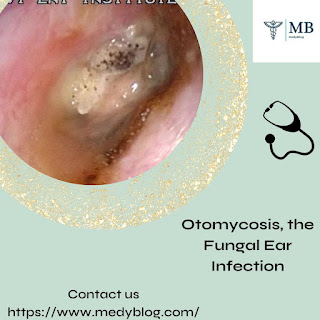Sinusitis/Sinus Infection Symptoms | Medyblog
Sinus infections symptoms behavior
Before we
find the list of sinus infection (sinusitis) symptoms, we must understand that
you will find two to four sinus infection symptoms in acute sinusitis.
However, you will see only one or two sinus infection symptoms in chronic
sinusitis. In chronic sinusitis, the infection is present for a long time, and
there will be some balance between disease and body, decreasing the number of
complaints. This balance comes in as the body adapts to the infection and
learns how to control it. So, the complaints will come down in the transition
between acute sinusitis and chronic sinusitis. In chronic cases, the patient
might have only one complaint: phlegm is coming from the back of the nose to
the throat and must clear their throat regularly or just nose block. When we
talk to such patients, they will agree that they had multiple symptoms at one
phase of the disease, indicating acute sinusitis. Gradually, the number of
symptoms has settled down to one or two symptoms. However, all the chronic
cases will have some acute exacerbation, i.e., when there is a disturbance in
the balance between disease and body, chronic will become acute. There will be
a high infection in the sinus and will have more and more complaints. Again,
after medication or an increase in immunity, the disease will go back to a
chronic form called “Acute
on Chronic Sinusitis.”
Sinus infection or Sinusitis symptoms
To
understand how sinus infections occur, read "Problems
with Sinuses" part of the What is sinus? Read Article below in
detail.
1. Running nose
When there
is a bacterial or viral, or fungal infection in the sinus, the sinuses secrete
more fluid than usual. These fluids escape from the nose.
2. Nose block
A. Secretions due to the sinus infection can
make the opposite corresponding walls stick together and block the airway.
B. Due to repeated infections or a severe
infection, there will be swelling of the nose walls. This swelling can reduce
the breathing airway.
3. Headache
In
sinusitis, fluid stagnates in the sinuses, which are supposed to be air-filled
cavities. As a result, the retention of fluid can increase beyond the capacity
of sinuses, causing pain or headache. Sometimes, if the sinus opening is
blocked, the air in the sinus is absorbed, creating a negative pressure that
causes headaches.
4. Facial
pain
There will
be pain between, above, and below the eyes and sometimes on top of the head.
This pain will be continuous and dull aching pain.
5. I) A feel that phlegm is oozing out from the
back of the nose to the throat.
Ii) A
necessity to clear the throat frequently
Phlegm moves
out from the sinus into the nose and then the back of the nose, and then it
slips into the throat. Most of it goes into the stomach through the food pipe.
However, a part of it will go into the voice box, giving the urge to clear the
throat while talking.
6. Frequent
sore throat or throat pain
Fluids
secreted in infected sinuses can have toxins, bacteria, and viruses. In addition,
this fluid travels through the throat and can end up infecting the throat.
7. Frequent
attacks of cough
Due to the
fluid released from the sinus, our throat can be irritated, causing cough.
Rare sinus
infection symptoms shown in eyes
Sometimes a severe
infection in the sinuses can affect the eyes due to the proximity between them.
1. Redness
of the eye
2. Watering
of the eye
A conflict
in nasal allergy and sinus symptoms
We will have
almost the same symptoms for nasal allergy and sinusitis. So one way to
differentiate is allergy testing and CT scan. Another way is to give allergy
medication if it is a simple allergy. Then, if we get an excellent response
within 4 to 5 days with the allergy medication, we can quickly rule out
sinusitis.




Comments
Post a Comment